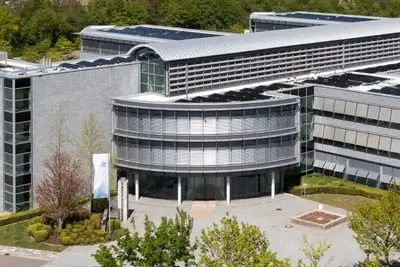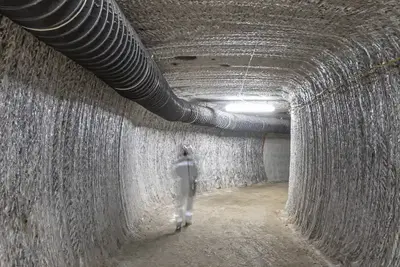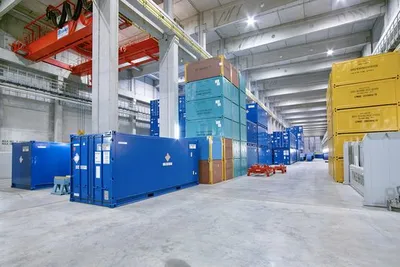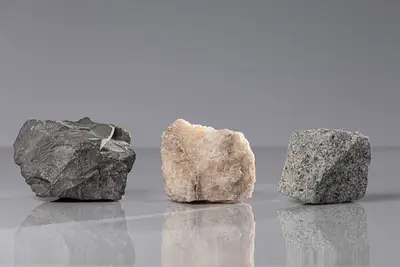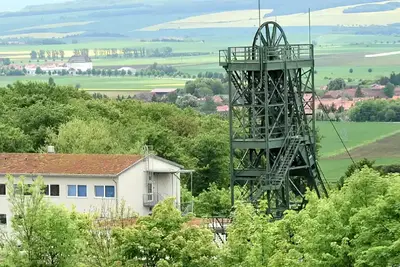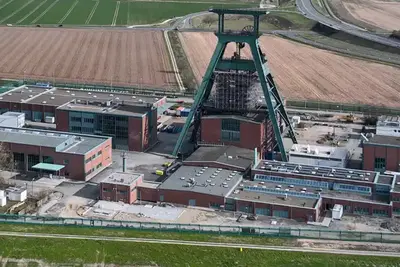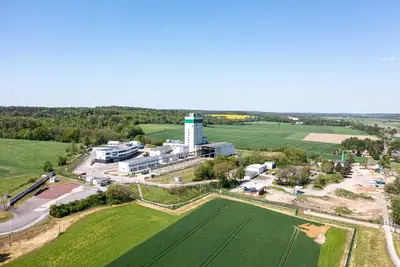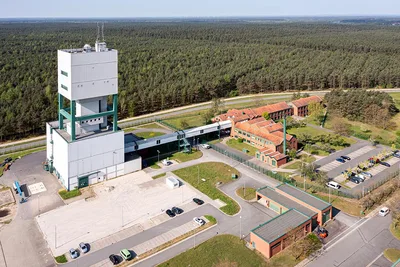Process
In order to perform the measurements successfully and minimise restrictions, it was particularly important to adhere to a tight schedule. The process consisted of the following steps:
Step 1: Information events
In September 2018, the first information events were held for owners and managers of agricultural and woodland areas. The general public were informed about the project in October 2018 via a series of events entitled “Concerning Asse”. Various information events were also held in 2019. When work began, the BGE invited people to another instalment of Concerning Asse at the Remlingen village community centre in order to report on the work that was to be carried out over the coming months. Further information was provided over the course of the work, including weekly reports on current progress (German only) in the 3D seismic survey on the BGE website.
Step 2: Obtaining access permits
The process of securing a legal basis for the 3D seismic survey began in November 2018. Staff from the contractor Informations- & Planungsservice GmbH (IPS) visited the villages within the measurement area and spoke to landowners about the access permits.
Moreover, negotiations were also held with the managers of agricultural and woodland areas to establish licence agreements for accessing the land and carrying out the necessary work.
Step 3: Preparation for field work and fine tuning
Test boreholes were drilled at the start of August 2019. This work also included testing the technology that was to be used – in this case, primarily the equipment for creating the boreholes. The results were used to stipulate which drilling technology would be used and to set out a definitive drilling schedule.
Inspections to ensure the absence of unexploded ordnance began in September 2019, as did the survey of source and receiver points using GPS. The coordination of detailed aspects of the measurement procedure with landowners also began in September 2019. For example, these details included where the geophones would be installed and what routes would subsequently be used by the vibration vehicles.
Step 4: Drilling work
In preparation for the explosion seismology work, a total of 6,364 boreholes were drilled in the woodland area around the Asse II mine from October to December 2019. The boreholes had a maximum depth of 15 metres and were filled with a maximum of around 1,000 grams of explosive. These boreholes were necessary because excitation was also necessary in the woodland area, where the vibration vehicles could not be used. The work was carried out in close coordination with the ecological construction-supervision service in order to minimise interference with the natural world. Drilling work was completed ahead of schedule in mid-December 2019.
Furthermore, preparations were made for vertical seismic profiling (VSP) measurements in four selected deep boreholes that were already in existence. The aim of these measurements was to improve the velocity model from the area of the overburden down to the depth of the borehole receivers. This information was needed for the subsequent evaluation of 3D seismic measurement data and is particularly useful for improving the conversion of the measured seismic travel times into depth values.
Step 5: Measurement
The actual 3D seismic survey, including the commencement of seismic excitation using vibration vehicles and explosion seismology in the boreholes, began in mid-January 2020 and was completed on schedule at the end of February 2020. This work involved the use of multiple vibration vehicles for excitation at various points within the measurement area. The measurements began in the south of the survey area.
Step 6: Follow-up
Once the measurements were completed, the technical equipment was dismantled. This work was completed at the start of March 2020 and was followed by a several-month process of renaturing as well as the documentation and evaluation of possible damage and other work.
Step 7: Compilation, evaluation and documentation of measurement data
Work to compile the measurement data and document the measurements was completed by the end of 2020. The data is currently being evaluated with the help of sophisticated computer-assisted methods. This evaluation will be followed by a process of geological interpretation before the information is incorporated into the geological model of the Asse. The aim is to obtain a three-dimensional structural model of the Asse by 2023.

The 3D seimsic measurements are to begin on November 1, 2019.
Info Asse
Please don’t hesitate to contact the staff at the Asse information centre if you have any questions. If necessary, they will also put you in touch with their relevant specialist colleagues.
If you would like to see what the Asse II mine is like for yourself, we would be delighted to take you on a tour. Please contact the Asse information centre for further information.

